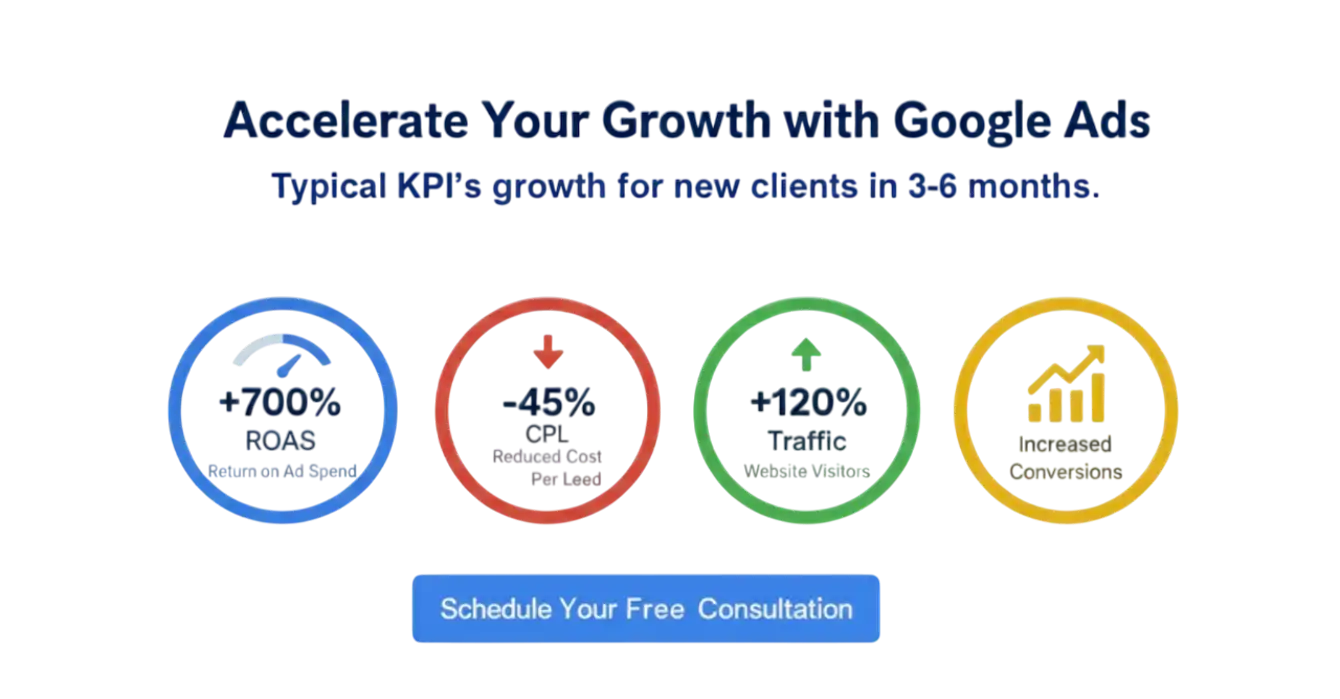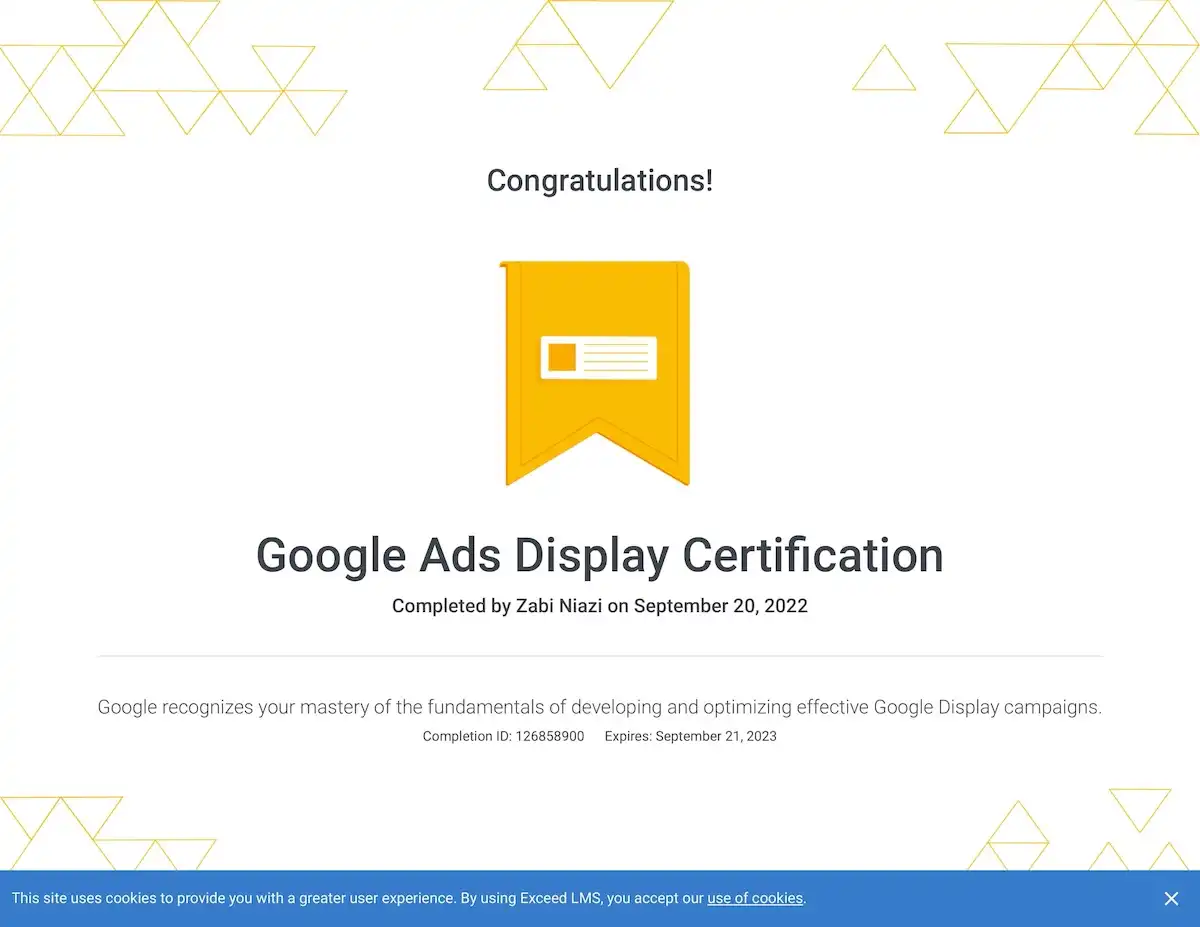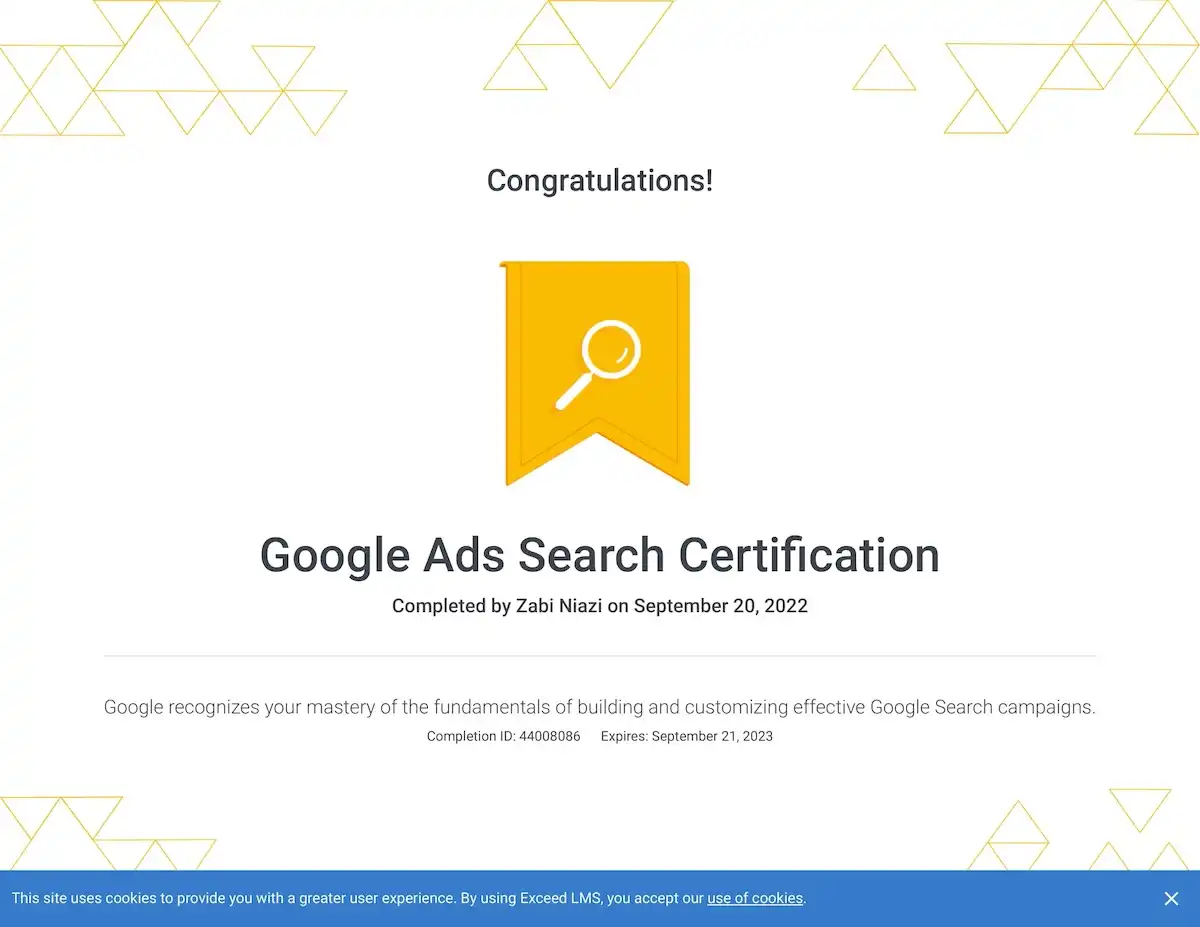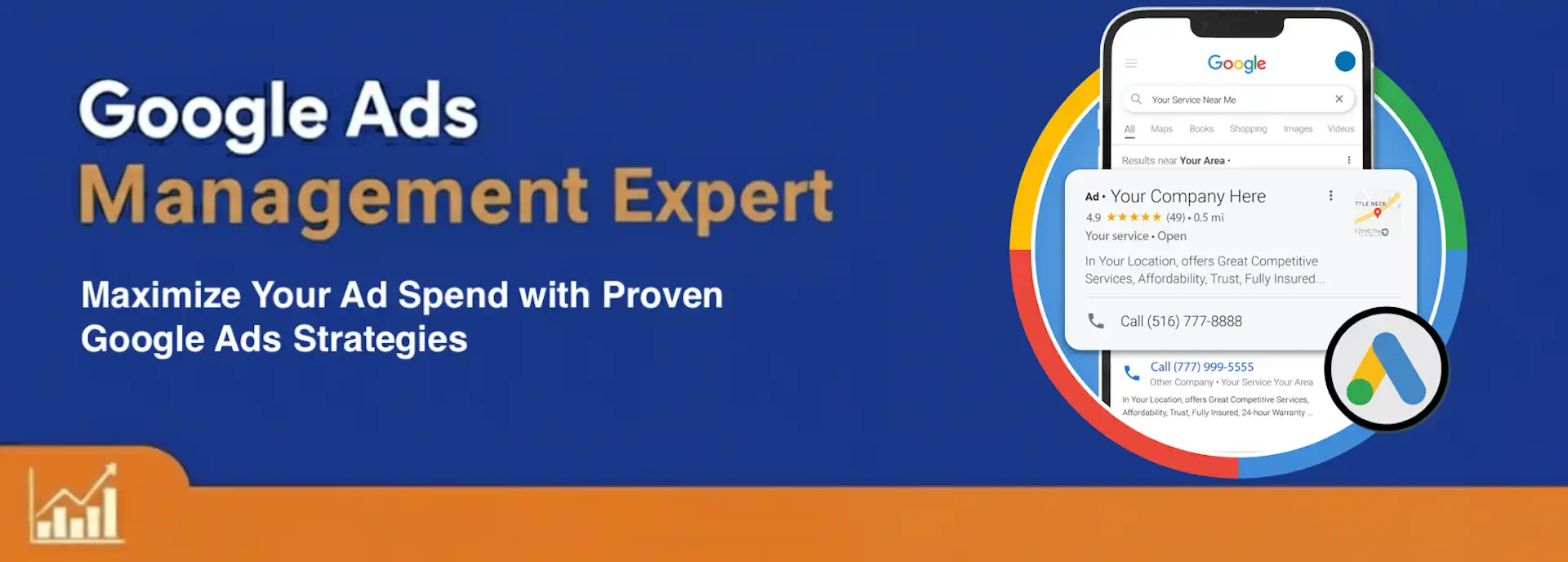
Certified Google Ads Consulting Expert and Google Partner
Struggling with high CPCs or low conversions can drain your marketing budget and stall business growth. As a certified Google Ads Consultant and official Google Partner, I bring over 16 years of proven experience turning paid advertising challenges into consistent revenue growth for brands across industries. Whether you’re a B2B SaaS company or an eCommerce retailer, I have the expertise to design, optimize, and scale Google Ads campaigns that deliver measurable results.
My strategies leverage cutting-edge techniques across Google Ads and emerging digital advertising platforms to ensure your ad spend delivers the highest possible return on investment, boosting lead volume, sales, and brand visibility sustainably.
Ready to boost your conversions and reduce wasted ad spend?
What is Google Ads (AdWords)?
Google Ads, formerly Google AdWords, is Google’s premier online advertising platform, enabling businesses to display targeted ads across Google Search, YouTube, and the expansive Google Display Network. Utilizing a pay-per-click (PPC) model, advertisers pay only when users click their ads, efficiently driving qualified traffic that converts into customers.
Google Ads Advanced Features
In 2025, Google Ads incorporates cutting-edge AI and machine learning technologies that empower advertisers to enhance targeting accuracy, automate bidding strategies, and optimize campaigns effectively. Features like Smart Bidding, Performance Max, and granular audience segmentation help maximize ROI while reducing manual management overhead.
Boost SEO with Google Ads Insights
Beyond paid visibility, Google Ads provides critical insights that can significantly enhance your organic SEO strategy. Analyzing campaign data—such as high-performing keywords and detailed user behavior—allows businesses to refine website content, improve search rankings, and strengthen overall digital presence.
Google Ads and SEO Integration
Partnering with an experienced Google Ads consultant ensures expert campaign management, leveraging the latest platform features to unify paid and organic marketing efforts. This integrated approach drives sustainable business growth and gives you a competitive edge in your market niche.
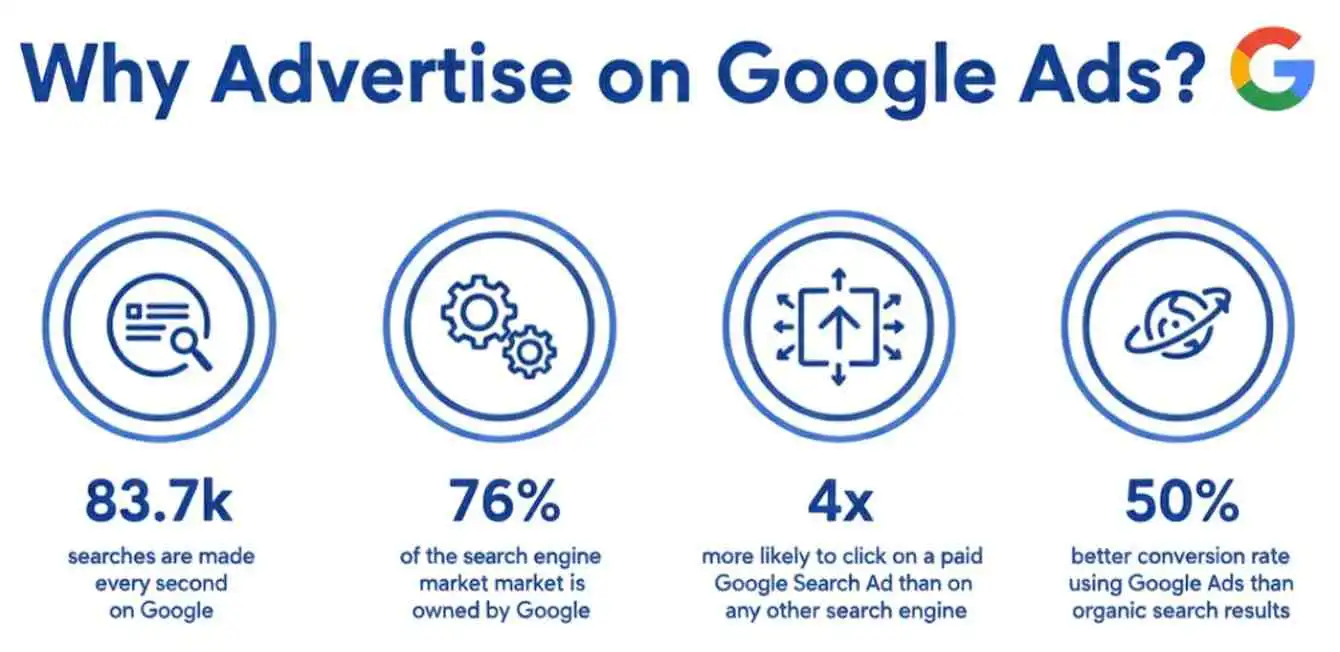
Key Business Goals and Objectives Achieved with Google Ads
As your dedicated Google Ads Consultant, we transcend basic campaign management, delivering sophisticated strategies designed to elevate your brand, maximize ROI, and secure a dominant position in the digital landscape. Our deep expertise in Google Ads consulting services ensures every campaign is meticulously crafted to meet and exceed your specific business objectives, from initial engagement to long-term customer loyalty.
Maximize Lead Generation and Conversions
Our Google Ads consultants optimize every facet of your campaigns – from hyper-targeted keyword selection and compelling ad copy to conversion-optimized landing pages. We implement advanced tracking and A/B testing, meticulously refining funnels to attract high-quality leads and drive superior conversion rates, ensuring maximum efficiency for your Google Ads budget.
Additional strategies for maximizing lead generation:
- Advanced keyword research targeting high-intent audiences for better lead quality.
- Optimized ad copy aligned with buyer intent to increase CTR.
- Conversion-focused landing page design and testing for maximum ROI.
- Integration with SEO consulting to enhance lead quality across channels.
Internal resources: PPC Consultant, Paid Search Consultant.
Boost Online Sales and E-commerce Performance
As your e-commerce Google Ads expert, we specialize in increasing product visibility and driving qualified traffic directly to your online store. We develop dynamic shopping campaigns, refine product feeds for optimal visibility, and implement precise smart bidding strategies to significantly boost your e-commerce revenue and expand your market share.
- Google Shopping campaigns optimized for higher CTR and conversions.
- Feed optimization to ensure products rank on top for target search queries.
- Smart bidding strategies and audience targeting for revenue maximization.
- Integration with Google Ads Account Audit for continuous performance evaluation.
- Conversion tracking linked to e-commerce analytics for precise ROI measurement.
Learn more: Google Shopping campaigns guide.
Drive Targeted In-Store Foot Traffic
Bridging the gap between online engagement and offline sales is our expertise. Our Google Ads consultants craft sophisticated location-based campaigns, optimize for local search intent, and implement geo-fencing strategies to bring high-intent customers through your physical doors, enhancing local brand presence and increasing valuable offline conversions.
- Location-based campaigns targeting high-intent local customers.
- Geo-fencing and radius targeting to attract nearby buyers.
- Optimized for mobile and local search to drive in-store traffic.
- Integration with Local SEO strategies for a comprehensive local presence.
- Tracking offline conversions using call tracking and store visits.
Learn more: location extensions in Google Ads.
Enhance Brand Visibility and Market Reach
Beyond immediate transactions, we work as your strategic Google Ads partner to amplify your brand’s presence across vast display networks. Through impactful display campaigns, engaging video ads, and brand-focused search strategies, we ensure your message reaches the most relevant audiences, building strong brand recognition and authority within your industry.
- Display campaigns optimized for reach and engagement across the Google Display Network.
- YouTube and video campaigns designed to enhance brand recall.
- Remarketing strategies to re-engage previous visitors and prospects.
- Performance analytics and optimization to expand market reach.
- Integration with Paid Social advertising for multi-channel brand presence.
Learn more: Google Display Network guide.
Optimize Ad Spend and ROI with Strategic Insights
A cornerstone of our Google Ads consulting is ensuring every dollar of your ad budget delivers maximum return. We conduct rigorous performance analysis, identify untapped opportunities, and continuously refine your campaigns to eliminate wasted spend and significantly improve your overall return on investment, providing clear, actionable insights every step of the way.
- Custom dashboards and reporting for actionable insights.
- Advanced bid optimization for maximum ROI.
- Ongoing A/B testing and ad copy optimization.
- Identification and removal of underperforming keywords or campaigns.
- Integration with analytics for multi-channel ROI tracking.
External: Google Ads reporting and insights.
Biz Goal 6 – Accelerate App Downloads and User Engagement
For app developers seeking rapid growth, our Google Ads consulting services are indispensable. We design powerful Universal App Campaigns (UACs) and targeted promotional strategies that put your app directly in front of interested users, driving higher download rates, increased installs, and sustained, meaningful user engagement.
- Universal App Campaigns (UAC) for optimized app installs.
- Targeted promotional campaigns for high-intent users.
- Integration with app analytics to track engagement and retention.
- Remarketing strategies to maximize lifetime value.
- Continuous campaign optimization for top app store visibility.
Learn more: Universal App Campaigns Guide.
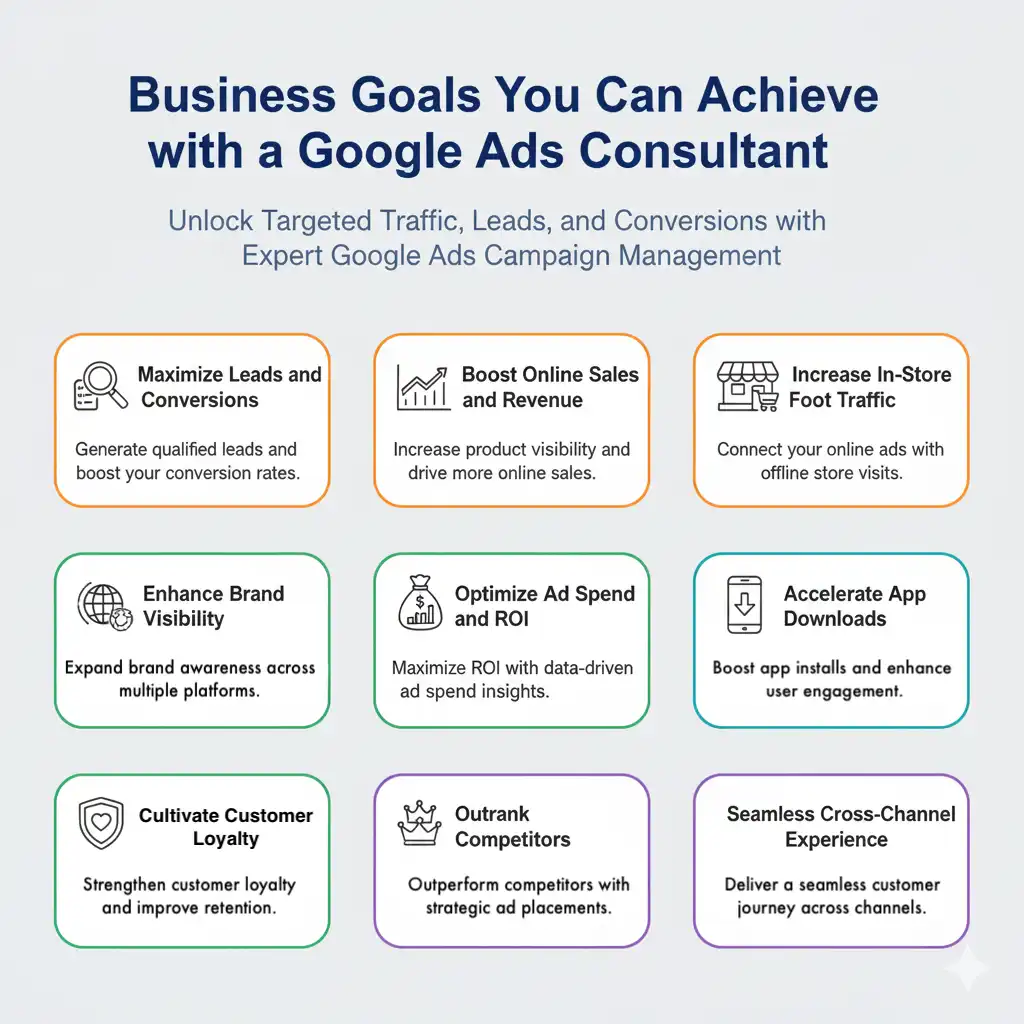
As your dedicated Google Ads Consultant, we transcend basic campaign management, delivering sophisticated strategies designed to elevate your brand, maximize ROI, and secure a dominant position in the digital landscape. Our deep expertise in Google Ads consulting services ensures every campaign is meticulously crafted to meet and exceed your specific business objectives, from initial engagement to long-term customer loyalty.
Advanced Goals for a Competitive Edge
Beyond the core objectives, our Google Ads consultancy also focuses on advanced strategies for sustained growth:
Increase Customer Retention
Consultant’s Edge: We implement sophisticated remarketing and customer match strategies to engage your existing customer base. By tailoring unique offers and messaging to repeat buyers, we help you increase customer lifetime value, fostering loyalty and driving repeat business – a key differentiator for any Google Ads expert.
Maximize Brand Visibility
In competitive markets, we ensure your brand maintains a commanding presence. Through aggressive, data-driven bidding on strategic keywords and continuous monitoring of Auction Insights, our consultants work to maximize your impression share, ensuring you capture maximum visibility against competitors for high-value searches.
Cross-Channel Google Ads Integration
We believe in a holistic approach. Our Google Ads consultants integrate your campaigns with Google Analytics 4 (GA4) and CRM systems to provide a unified view of your customer journey. This allows for optimization across all touch-points, ensuring a cohesive and effective digital marketing ecosystem.
Benefits of Partnering with an Expert Google Ads Specialist
Choosing the right Google Ads specialist can significantly impact your campaign’s success and your overall digital marketing ROI. An expert partner not only manages your campaigns but brings strategic insight, advanced techniques, and ongoing support tailored to your business objectives. By working with a dedicated professional, you gain access to proven methods that maximize your advertising budget, improve targeting accuracy, and ensure sustained growth in competitive markets.
Below are key benefits of engaging with a certified Google Ads consultant:
Maximize ROI
Reduce wasted spend and accelerate business growth through data-driven Google Ads campaign management and precise optimization techniques.
Save Time and Gain Expertise
Avoid costly missteps with proven PPC strategies from a dedicated Google Ads specialist who keeps campaigns optimized.
Competitive Edge
Leverage advanced targeting and analytics to outperform competitors and capture more valuable leads.
Strategic Partnership
Receive customized recommendations and ongoing support from a marketing expert focused on your growth and long-term success.

Why Choose a Google Ads Certified Consultant?
Selecting the right professional to manage your Google Ads campaigns can make a significant difference in your business’s online success. With increasing competition and constant platform changes, you need a certified expert who not only understands the technical aspects of Google Ads but also knows how to tailor strategies to your specific business needs. A certified Google Ads Consultant brings credibility, proven expertise, and a data-driven approach that ensures your ad spend translates into measurable growth, increased leads, and higher ROI.
Customized Pay-Per-Click Strategies Aligned to Goals
As your Google Ads Consultant, I design custom PPC strategies aligned with your unique business objectives. Whether targeting niche audiences or broad markets, we integrate:
- Smart Bidding strategies to maximize conversions and ROI.
- Performance Max campaigns for multi-channel optimization.
- Advanced audience segmentation and ad scheduling.
- Reference: Performance Max Campaigns Overview.
Proven Expertise with Certified Professionals
Working with a certified Google Ads expert ensures campaigns are managed by professionals with verified skills. With over 16 years of experience handling multi-million-dollar ad budgets across SaaS, eCommerce, and local market sectors, I offer strategies tailored to accelerate business growth and maximize profitability.
- Multi-industry experience in demand generation and paid media.
- Proven campaign optimization techniques for high ROI.
- Internal resources: Google Ads Audit and Paid Search Consultant.
Global Reach with Local Expertise
Based in San Francisco and serving clients worldwide, I combine local market insights with global best practices. This approach ensures campaigns resonate with the right audience across regions while scaling effectively for international reach.
- Localized campaigns for maximum engagement.
- Scalable strategies for multi-region visibility.
- Reference: International Campaign Best Practices.
Start with a Comprehensive Google Ads Audit
A thorough Google Ads audit is the foundation for improved paid search performance. This audit identifies growth opportunities, campaign inefficiencies, and data-driven optimization strategies.
- Assessment of keyword targeting, ad copy, and bidding strategy.
- Evaluation of conversion tracking and performance metrics.
- Internal link: Google Ads Account Audit.
- External reference: Conversion Tracking Guide.
Google Ads Consultant for Audits and Optimization
Achieving a strong return on investment starts with a thorough audit to identify bottlenecks and growth opportunities. My detailed Google Ads audits uncover wasted ad spend, poor targeting, and ineffective keyword strategies. By leveraging data-driven insights and advanced analytics, I create optimized campaigns that increase click-through rates (CTR), boost conversion rates, and lower cost per click (CPC). Whether you need a one-time audit or ongoing optimization, my consulting services help your campaigns scale profitably with continuous improvements aligned to your business goals. Learn more about my PPC optimization services.
Google Ads Audit and Analysis
An effective audit dives deep into every component of your Google Ads account. I analyze campaign structure, keyword relevance, ad copy performance, and bidding strategies to identify gaps and hidden opportunities. Competitive benchmarking helps uncover where your competitors outperform you, enabling us to adapt your campaigns accordingly. Strategies focused on enhancing your Quality Score help reduce your CPC and improve ad placements, making every advertising dollar work harder. Discover how comprehensive audits can unlock untapped potential in your campaigns.
Managed Google Ads Services
End-to-end campaign management covers everything from initial setup to daily optimization. I handle multi-channel campaigns across Search, Display, YouTube, Google Shopping, and Performance Max. Precise bid management and tailored audience segmentation ensure your ads reach the right prospects at the right time. Continuous A/B testing of headlines, calls to action, and landing page elements allows data-backed refinements that sustain growth and profitability. Explore my detailed Google Ads campaign management approach designed to drive measurable success.
Ad Spend and ROAS Optimization
Maximizing your marketing budget requires smart allocation and rigorous performance tracking. I implement advanced conversion tracking systems that provide clear insights into campaign ROI and user behavior across funnels. Regular campaign refinements focus on raising CTR, lowering CPC, and increasing overall return on ad spend (ROAS). Strategic budget adjustments eliminate waste and reinvest in high-performing segments, helping your ads deliver more qualified leads and sales with every dollar spent.
Why Hire an Expert Google Ads Consultant for Your Business?
Partnering with a skilled Google Ads Consultant guarantees that your PPC campaigns are strategic, cost-efficient, and aligned to your specific growth goals. Unlike managing campaigns in-house or relying on generic services, an expert consultant brings deep industry knowledge, data-driven insights, and hands-on experience optimizing multi-channel paid advertising to generate consistent, measurable results.
Strategic Alignment with Business Objectives
A professional Google Ads Consultant develops campaigns that are closely tied to your sales funnel and customer journey, ensuring that every ad dollar is invested where it counts most. This tailored alignment boosts conversion rates and customer acquisition efficiency while avoiding wasted spend on poorly targeted traffic.
- Align campaigns with your sales and marketing goals for maximum impact.
- Integrated strategy connecting SEO, Google Ads, and paid media efforts.
- Target high-value customer segments to optimize lead quality and conversions.
Budget Protection with Precise Targeting and Bid Management
Through meticulous keyword research, audience segmentation, and real-time bid adjustments, an expert Google Ads Consultant protects your budget by eliminating ads that don’t convert and maximizing exposure for high-performing keywords. This results in a lower cost per click (CPC) and higher return on ad spend (ROAS), directly impacting your bottom line.
- Advanced bid management and budget allocation strategies.
- Use of smart bidding and automated strategies for efficiency.
- Continuous monitoring to ensure minimal wasted spend.
- Reference: Google Ads Bid Strategies.
Competitive Advantage through Advanced Analytics and Research
Google Ads specialists leverage proprietary tools and competitor insights to uncover untapped keyword opportunities and audience niches your competitors may miss. They continually analyze performance data and industry trends, making adjustments that keep you ahead in a constantly evolving digital marketplace.
- Competitor analysis to identify gaps in your market strategy.
- Utilizing Google Ads auction insights for competitive positioning.
- Advanced analytics dashboards for actionable insights.
- Continuous optimization based on industry trends and performance metrics.
Enhanced Messaging that Drives Conversions
Crafting compelling ad copy and leveraging data-backed landing page optimizations leads to higher click-through and conversion rates. Expert consultants use A/B testing and psychological triggers to fine-tune messaging that resonates with your target audience and spurs action.
- Dynamic ad copy that aligns with customer intent.
- Landing page optimization with conversion-focused design.
- Implementation of persuasive call-to-action strategies.
- Internal links to PPC Consultant for complementary paid media guidance.
Scalable Solutions for Businesses of All Sizes
From nimble startups to large enterprises, experienced Google Ads management helps you scale campaigns optimally without losing control over cost or quality. With strategic oversight, your paid search efforts evolve in tandem with your business needs to achieve sustained growth and competitive dominance.
- Flexible campaign structures for startups, SMBs, and enterprises.
- Scalable bidding and audience strategies to meet business growth.
- Multi-channel integration to maintain consistent brand messaging.
- Ongoing optimization for long-term ROI improvement.
Internal resources: Paid Search Consultant.
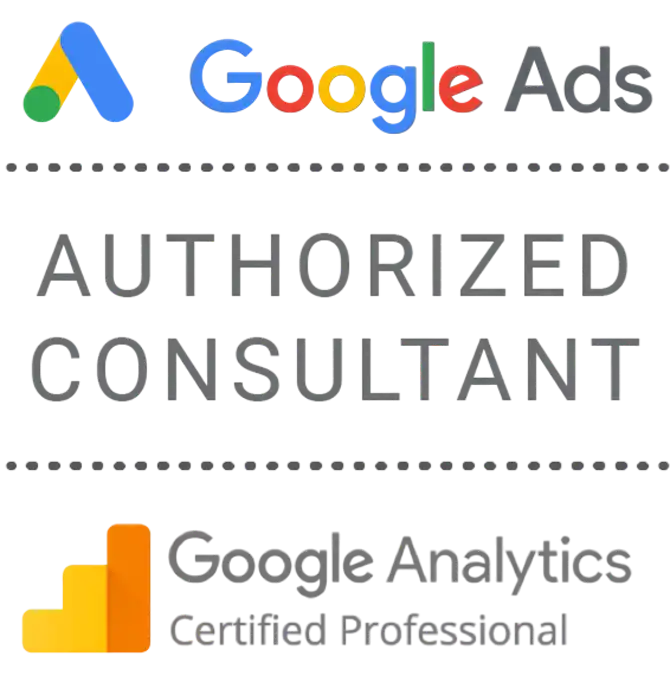
Google Ads Consultation for Growth and ROI
Every successful Google Ads campaign begins with a comprehensive consultation designed to deeply understand your unique business objectives, target audience, and competitive environment. This essential first step allows us to tailor strategies that align with your specific growth ambitions, whether that means increasing brand awareness, driving new lead generation, or boosting e-commerce sales. With a data-driven approach and proven methodologies, this personalized consultation sets the foundation for campaigns optimized to deliver maximum return on investment.
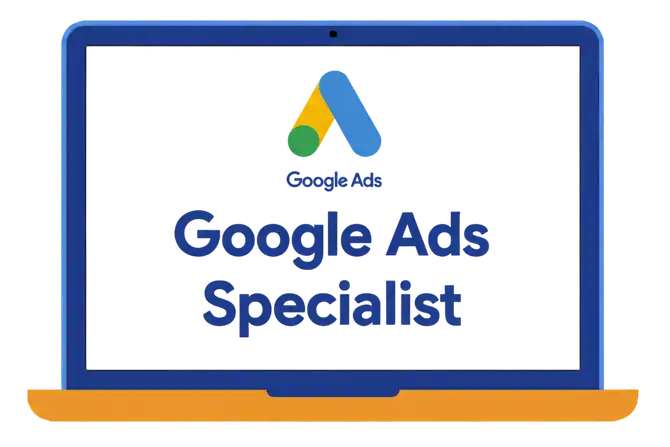
Customized Consultations Aligned to Your Business
Every effective Google Ads campaign begins with a tailored consultation designed to gain a deep understanding of your unique business goals, target audience, and competitive landscape. This foundational step ensures that campaign tactics are directly aligned with what your business seeks to achieve, from brand awareness to lead generation or e-commerce sales growth.
Proven Four-Step Framework for Success
I deploy a proven four-step approach to maximize your Google Ads ROI:
- Discovery: Conduct comprehensive audits and competitor analyses to pinpoint growth opportunities and gaps.
- Strategy: Develop a custom campaign roadmap featuring high-ROI tactics and targeted messaging strategies.
- Optimization: Continuously refine campaigns to lower costs, enhance Quality Scores, and improve conversion rates.
- Reporting: Provide detailed and transparent reports that deliver actionable insights to keep your campaigns on track and evolving.
This scalable framework has proven effective for startups, SMBs, and enterprises alike, helping businesses of all sizes achieve consistent, sustainable growth.
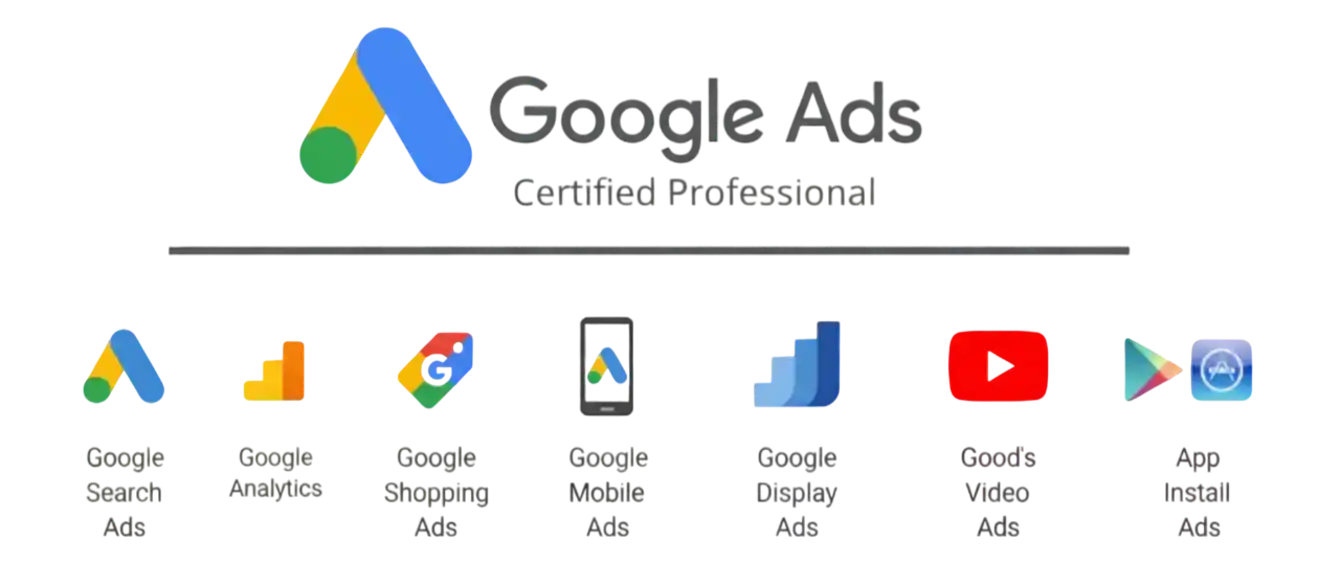
Industry-Specific Google Ads Consulting Services
Google Ads offers versatile paid advertising solutions tailored to meet the unique demands of various industries. Each sector faces distinct challenges and opportunities that require customized campaign strategies, precise targeting, and continuous performance optimization. Whether you operate an eCommerce store, provide B2B services, or are in healthcare, real estate, education, or professional services, specialized Google Ads consulting can unlock growth by addressing your industry’s specific needs with expert campaign management and data-driven tactics. Whether Shopify, WooCommerce, or enterprise platforms, my data-backed strategies maximize sales growth.
eCommerce Google Ads Consultant
Specializing as an eCommerce Google Ads Consultant, I help online retailers optimize campaigns for maximum ROAS and sales growth.
- Optimize Shopping Ads to increase revenue through data-driven optimization.
- Scale Performance Max campaigns across Search, Display, YouTube, and Gmail.
- Implement advanced segmentation and dynamic remarketing to re-engage visitors and drive repeat purchases.
- Ensure smooth integration with Shopify, WooCommerce, and other eCommerce platforms using automated feed management.
- Reference: Google eCommerce Advertising Best Practices.
B2B Google Ads Consulting
For SaaS, technology, and service-oriented clients, I craft B2B Google Ads campaigns that precisely target decision-makers and C-level executives with tailored messaging.
- Improve lead quality via sophisticated ABM strategies and negative keyword controls.
- Build full-funnel demand generation processes integrating multiple targeting layers.
- Provide actionable analytics to optimize pipeline efficiency and shorten sales cycles.
- Learn more: ABM & Digital Marketing Guide.
Healthcare and Medical Google Ads Services
Healthcare marketers benefit from compliant, patient-focused campaigns designed to drive meaningful results.
- Target geographically relevant patient populations with Local Services Ads and HIPAA-compliant creatives.
- Optimize for appointment bookings and patient inquiries with custom conversion tracking.
- Leverage Google’s healthcare advertising solutions following Healthcare Advertising Policies.
Real Estate Google Ads Consultant
Real estate clients receive specialized PPC services that drive qualified leads and property inquiries.
- Implement hyperlocal targeting to capture buyers, sellers, and renters in specific areas.
- Use lead capture forms integrated with CRMs for seamless follow-up.
- Execute remarketing campaigns to nurture leads and accelerate decision-making.
- Explore: NAR Real Estate Advertising Examples.
Education and Online Learning Google Ads
Educational institutions maximize enrollment and engagement through strategic Google Ads campaigns.
- Advertise courses, programs, and webinars to segmented prospects by demographics and interests.
- Retarget past visitors with timely offers and enrollment deadlines.
- Track student conversion paths from inquiry to registration.
- Reference: Google Ads Education Policies.
Legal and Professional Services Google Ads
Professional service firms, including law offices and consultants, enhance client intake with targeted Google Ads campaigns.
- Keyword and geo-targeted campaigns for specific practice areas or consulting niches.
- Call-only campaigns and scheduling tools for immediate client contact.
- Text and call tracking to measure case intake effectiveness.
- Reference: ABA Guidelines on Legal Advertising.
Google Ads Consultant in San Francisco and Beyond
Serving clients locally in San Francisco, San Jose, Santa Clara, and globally, I offer expert Google Ads consulting customized to your unique market dynamics and business growth objectives. Whether you’re focusing on regional campaigns or scaling internationally, my strategic approach ensures your Google Ads campaigns leverage the latest tools and optimization methods to maximize ROI.
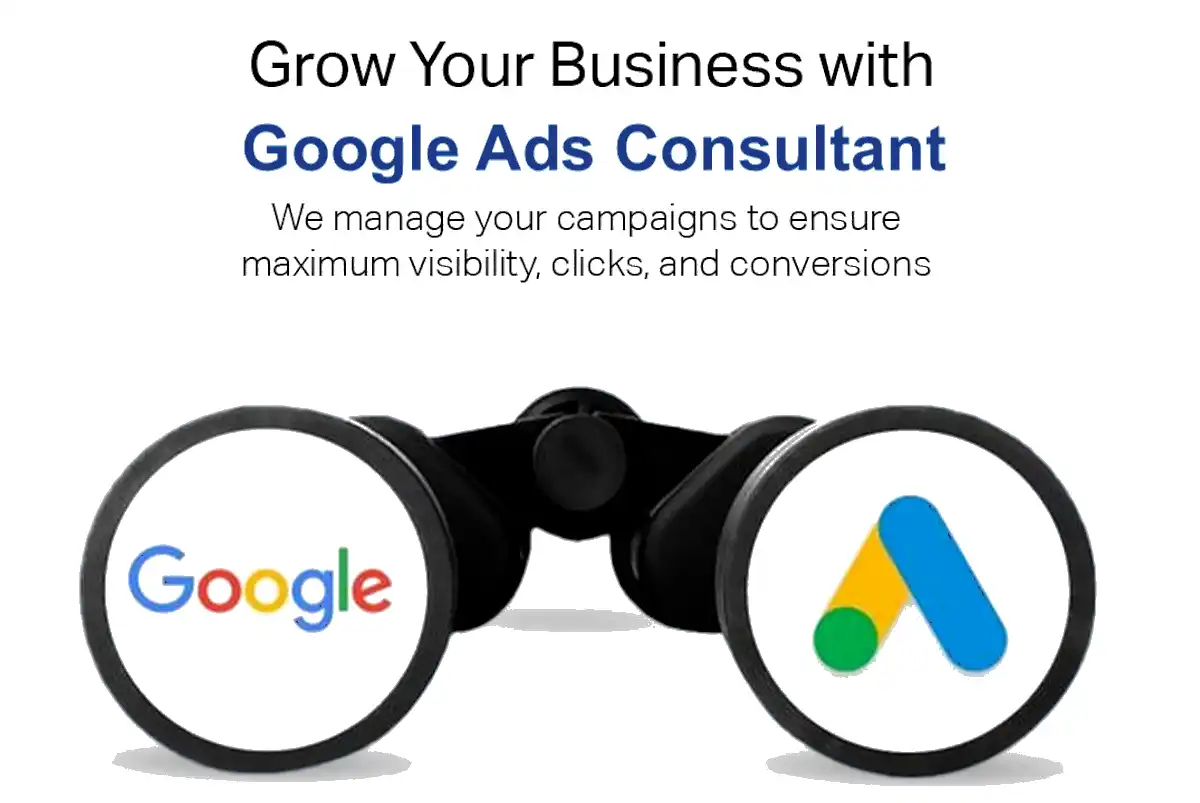
Integrated Cross-Channel Advertising Solutions
In addition to Google Ads, I provide comprehensive multi-channel advertising strategies including highly targeted LinkedIn Ads and Bing Ads campaigns that complement and amplify your paid search efforts. This integrated method broadens your brand’s reach across diverse platforms, targeting decision-makers on LinkedIn and cost-effective audiences on Bing, ensuring an efficient allocation of your advertising budget.
Proven Multi-Platform Success
Many clients have experienced marked growth by adopting this multi-platform strategy, balancing precision audience targeting, advanced segmentation, and budget optimization. Through regular performance analysis and agile campaign adjustments, I customize this winning formula to your industry specifics and evolving market conditions, ensuring continued lead generation, sales growth, and brand visibility.
Start your tailored Google Ads consultation today to unlock sustainable growth, increase qualified leads, and achieve measurable ROI with a trusted local expert and global reach.
Google Ads Campaign Types We Manage and Optimize
Unlock your business potential with my comprehensive Google Ads solutions, designed to drive growth and maximize your return on investment. I manage diverse PPC ads and Google Ads initiatives:
Search Ads target high-intent users actively searching for products or services. Perfect for capturing immediate demand and maximizing ROI.
- Use SEM consulting strategies to optimize keywords.
- Leverage Google Keyword Planner for research and insights.
- Apply PPC optimization techniques for efficient bidding.
- Enhance click-through rates using ad extensions and structured snippets.
Display Ads appear on websites, blogs, and news portals. Ideal for brand awareness, remarketing, and visually engaging audiences.
- Combine with SEO content strategies for better engagement.
- Implement Google Ads targeting options to reach relevant audiences.
- Use remarketing campaigns to convert returning visitors.
- Follow GDN best practices for ad placement and performance.
Shopping Ads showcase product images, pricing, and store details directly in search results. Perfect for e-commerce businesses.
- Integrate with Google Merchant Center.
- Optimize product listings using SEO keywords for better visibility.
- Track performance with auction insights.
- Leverage automated bidding to maximize ROI.
Video Ads engage audiences on YouTube and partner sites. Ideal for storytelling, product demos, and brand awareness.
- Use YouTube Ads strategies for engagement.
- Integrate with Google Ads campaigns for multi-channel reach.
- Optimize content using SEO video best practices.
- Implement skippable and non-skippable ad formats effectively.
App Ads drive mobile app installs and in-app engagement across Search, Play Store, YouTube, and Display networks.
- Use Google Ads targeting for high-value users.
- Apply PPC optimization to maximize app installs.
- Analyze performance with Google Analytics.
- Follow Google App Campaign best practices for creative formats.
Discovery Ads deliver visually rich, personalized content across YouTube, Discover, and Gmail feeds. Perfect for engaging high-intent audiences.
- Combine with SEO optimized content for better performance.
- Use Google Ads targeting to refine audience segments.
- Implement image-rich creatives to boost engagement.
- Track conversions with Google Analytics.
Local Services Ads connect verified providers with nearby customers and generate high-quality leads quickly.
- Ensure proper local SEO for visibility.
- Use Google Ads targeting for service areas.
- Include Google Guarantee badge for trust.
- Measure performance with analytics tools.
Performance Max campaigns use AI-driven automation to reach customers across all Google channels, maximizing conversions and ROI.
- Integrate with Google Ads strategy for multi-channel optimization.
- Use PPC automation for bid and budget efficiency.
- Track metrics via Google Analytics and conversion data.
- Follow Performance Max guidelines for creative assets.
Smart Ads automate targeting, bidding, and placements using AI to reach users most likely to convert with minimal management.
- Combine with Google Ads optimization.
- Use PPC campaign best practices for ROI.
- Integrate SEO keyword insights to improve targeting.
- Monitor conversions via Google Analytics.
Demand Generation campaigns create and nurture interest across YouTube, Discover, and Gmail with highly tailored storytelling to guide potential buyers.
- Leverage Google Ads strategies for multi-channel reach.
- Enhance engagement with SEO optimized content.
- Integrate YouTube Ads for visual storytelling.
- Track conversions via analytics tools for measurable results.
Specialized AdWords Consultant Offering Expert AdWords Services
As an experienced AdWords Consultant, I provide tailored AdWords Services to help businesses optimize their paid search campaigns for maximum return on investment. Unlike a larger AdWords Agency, I deliver hands-on, personalized campaign management that scales with your goals.
Why Hire an AdWords Consultant vs. an AdWords Company or Agency?
Partnering with an expert AdWords Consultant offers you focused, one-on-one attention without the overhead of large agencies or companies. Benefit from:
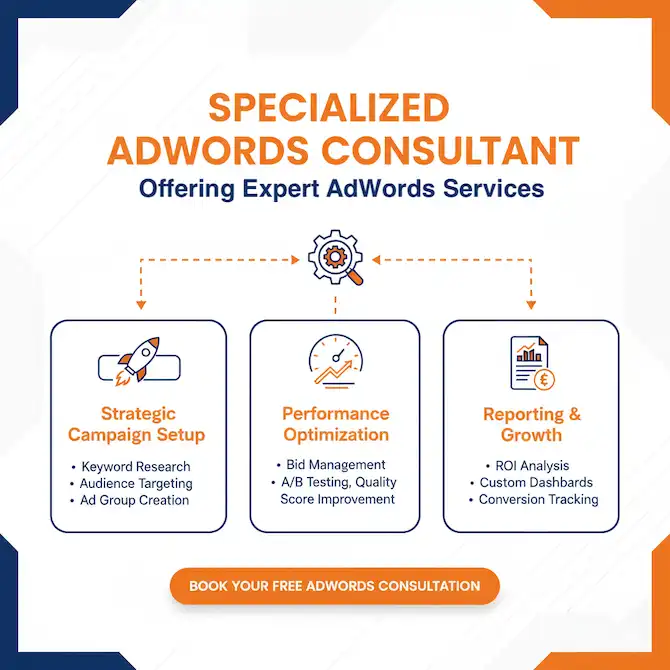
- Custom campaign strategies crafted to your business niche and objectives
- Enhanced keyword research and negative keyword implementation to reduce wasted spend
- Precise bid management enhanced by machine learning and manual optimization
- Transparent performance tracking and detailed reporting on key metrics like CTR, CPC, and conversions
Core AdWords Services I Provide
- Full-service AdWords Management including campaign setup, optimization, and weekly performance reviews
- Comprehensive keyword strategy development ensuring alignment with high-intent search queries
- Conversion-focused ad copywriting tailored to your products or services
- Landing page recommendations for improved Quality Score and conversion rates
- Setup and management of remarketing lists and customer match campaigns to boost retention
Who Benefits from My AdWords Consultant Services?
Whether you are a small business seeking high-quality local leads, a mid-sized enterprise launching new products, or a company needing ongoing campaign refinement, my bespoke AdWords Services adapt to your industry and scale:
- Retail and eCommerce brands optimizing shopping ads and dynamic remarketing
- B2B companies targeting decision-makers with tailored lead generation campaigns
- Local service providers driving foot traffic with geo-targeted ads
- SaaS firms combining search and remarketing for full-funnel growth
Start Maximizing Your AdWords Results Today
Invest in expert AdWords Management that puts your ad spend to work with smart targeting, continuous campaign improvements, and data-driven insights. Contact me to schedule your free consultation and discover the opportunities your current campaigns may be missing.
Common Google Ads Campaign Management Challenges and Solutions
Running successful Google Ads campaigns can be challenging due to rising costs and technical issues. Whether you are facing a high CPC or a low conversion rate, mastering the art of PPC troubleshooting is crucial for maximizing your return on ad spend (ROAS). Use this resource to quickly identify problems and find actionable solutions to help you optimize your Google Ads performance and efficiently fix your campaigns.
Challenge
In competitive industries, CPC prices continually rise, pushing up cost-per-click and diminishing your campaign’s cost-effectiveness. Without controls, this can bleed your budget fast and lower campaign ROI.
Solution
Reduce CPC by focusing on improving Quality Score through tightly themed ad groups, relevant ad copy, and matching landing pages. Utilize niche long-tail keywords with lower competition yet strong intent. Regularly add negative keywords to filter out irrelevant clicks and optimize bids based on high-value audience and device performances.
Need more clarity? Feel free to reach out:
z@zabiniazi.comGoogle Ads Campaign KPIs – Consultant’s Guide to Performance and ROI
A successful Google Ads campaign isn’t just about spending money; it’s about making sure every dollar works as hard as possible to achieve your business goals. That’s where Key Performance Indicators (KPIs) come in. These metrics are the vital signs of your campaigns, helping you understand what’s working and what needs improvement.
Essential Google Ads KPIs to Track
| KPI | What It Measures | What to Aim For | Optimization Tips |
|---|---|---|---|
| Impressions | Number of times your ad is shown. | Higher impressions with relevant targeting. | Expand keywords, refine audience targeting. |
| Clicks | Number of times users click your ads. | Maximum qualified clicks within budget. | Improve ad copy, add compelling CTAs. |
| Click-Through Rate (CTR) | Percentage of impressions that result in clicks. | 5%+ for effective search ads; varies by industry. | Test ad variations, add sitelinks and extensions. |
| Cost Per Click (CPC) | Average cost per click on your ad. | Low with quality traffic. | Optimize bids, improve Quality Score. |
| Quality Score | Google’s ad/keyword/landing page relevance score (1-10). | 7+ recommended to reduce costs and boost positions. | Improve ad relevance, landing page UX. |
| Conversions | Number of desired actions (purchases, leads). | High volume of qualified conversions. | Enhance landing pages, refine targeting. |
| Conversion Rate (CVR) | % of clicks resulting in a conversion. | Industry-dependent, 5-15% generally. | Optimize funnel, messaging, usability. |
| Cost Per Acquisition (CPA) | Cost to acquire a conversion or lead. | Keep low within profit margins. | Focus spending on top campaigns; reduce waste. |
| Return on Ad Spend (ROAS) | Revenue earned for each dollar spent. | 4:1 or higher for revenue-driven campaigns. | Concentrate budget on high-performing keywords and audiences. |
Additional Google Ads KPIs
| KPI | Why It Matters | Optimization Tips |
|---|---|---|
| Impression Share (IS) | Shows percentage of available ad impressions captured. | Boosts brand visibility and opportunity capture. |
| Search Impression Share Lost (Budget/Rank) | Percentage of impressions lost due to budget or rank. | Identifies auction competitiveness issues. |
| Average Position / Ad Rank | Google Ads placement metric affecting visibility and CTR. | Higher position = more engagement potential. |
| View-Through Rate (VTR) | % of users influenced by ad views without clicks converting later. | Captures branding and awareness attribution. |
| Landing Page Experience | Impacts Quality Score; user’s interaction post-click. | Affects ad rank and CPC. |
| Device Segmentation | Performance across mobile, desktop, tablet. | Tailor bids and creatives by device type. |
| Audience Segment Performance | Performance by demographics, interests, behaviors. | Refine targeting and budget for best segments. |
| Ad Extensions Metrics | Contribution of sitelinks, callouts, etc. | Improvement in CTR and ad real estate. |
| Attribution and Assisted Conversions | Multi-touchpoint influence on conversions. | Understand true channel contribution. |
Recommended Google Ads KPI Focus by Business Objective
| Business Goal | Priority KPIs | Notes |
|---|---|---|
| Brand Awareness | Impressions, CPM, VTR, Impression Share | Maximizes visibility and brand impressions. |
| Lead Generation | Conversions, CPA, CTR, Impression Share, Quality Score | Focuses on generating qualified leads cost-efficiently. |
| Ecommerce Sales | ROAS, Conversion Rate, AOV, Revenue Per Click, CPA | Prioritizes profit and transaction growth. |
| Long Sales Cycle / B2B | Assisted Conversions, Attribution Modeling, Conversion Rate | Tracks multi-step, complex buying journeys. |
Final Takeaway
Google Ads KPIs are essential to monitor and optimize campaign performance in 2025. Use this consultant-endorsed KPIs framework to sharpen targeting, improve bid and budget decisions, and drive conversions aligned with your business goals.

